Recent Articles
Popular Makes
Body Types
2018 GMC Acadia vs. 2018 Toyota Highlander: Which Is Best?
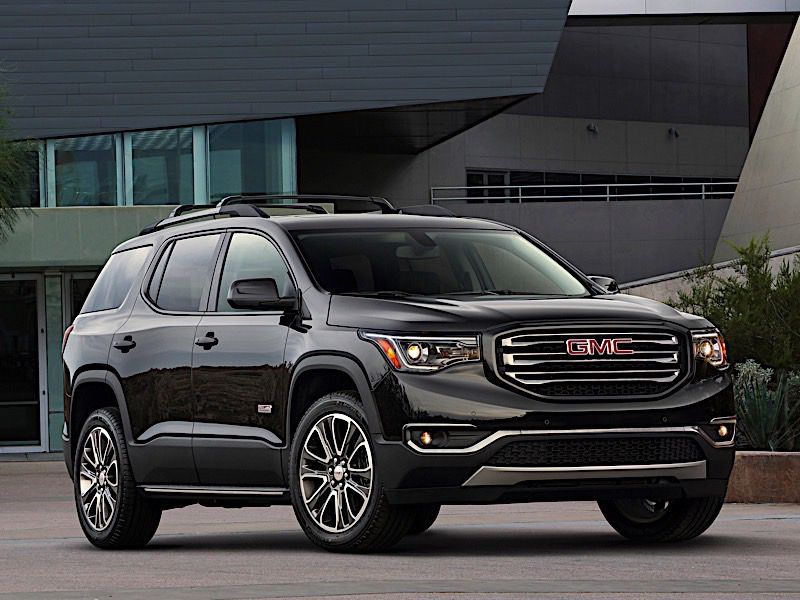
2018 GMC Acadia All Terrain front three quarter ・ Photo by General Motors
Choosing a new family SUV can be an arduous process, with everyone weighing in with their individual bias and specific requirements. Thankfully, both the 2018 GMC Acadia and 2018 Toyota Highlander are three-row crowd-pleasers.
The Acadia was fully redesigned for the 2017 model year and shares its platform with the Chevrolet Traverse and Buick Enclave. While the Acadia's a clear winner in many categories, it lags significantly behind its top competitors in sales. The Highlander, on the other hand, is one of the most popular three-row mid-size SUVs, thanks in part to the strength of the Toyota brand. In the following pages, we’ll compare the Acadia and Highlander to determine which is best.
Exterior Styling and Trim Levels
GMC and Toyota take different paths when it comes to exterior design, with the Acadia benefiting from a handsome premium truck brand approach. The Highlander’s exterior is more generic, although the front grille bears that unmistakeable Toyota maw. The 2018 GMC Acadia has six trim levels — SL, SLE-1, SLE-2, SLT-1, SLT-2, and Denali — with starting prices ranging from $29,995 through $46,095.
The 2018 Toyota Highlander has eight trim levels — LE, LE Plus, XLE, SE, Limited, Hybrid LE, Hybrid XLE, and Hybrid Limited — with starting prices that range from $31,230 to $45,360. While design is a subjective category, the GMC has more street presence and holds an advantage at the high-end with the distinctive Acadia Denali.
GMC Acadia
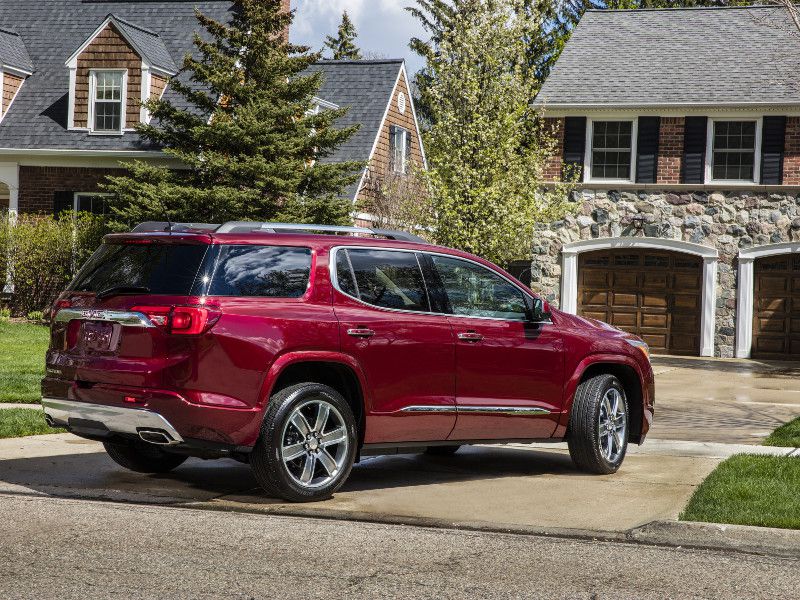
Photo by GMC
Interior
Both the Acadia and Highlander feature well-appointed interiors. The Acadia’s cabin is handsomely designed and quite comfortable, with soft-touch materials in all the right places, while the top-of-the-line Denali model defines rugged luxury.
The Highlander is available with a second-row bench seat or individual captain’s chairs, and the range-topping Limited Platinum is quite luxurious as it treads close to Lexus territory with amenities that include a panoramic sunroof and a heated steering wheel.
Tie

Photo by Toyota
Passenger and Cargo Volume
Hauling friends, family, and cargo is a core competency for both vehicles. The Acadia’s second-row seat provides 39.7 inches of legroom and 39.6 inches of headroom, while the Highlander’s second row allows 38.4 inches of leg room and 39.9 inches of headroom (without a moonroof). The third rows are not nearly as generously proportioned. The Acadia’s third row provides 31.1 inches of legroom and 37.2 inches of headroom, while the Highlander’s third row allows just 27.7 inches of legroom and 35.9 inches of headroom.
The Acadia provides 12.8 cubic feet of cargo capacity behind the third row, 41.7 cubic feet behind the second row, and 79 cubic feet behind the front seats. The Highlander allows for 13.8 cubic feet of cargo space behind the third row, 42.3 cubic feet behind the second row, and 83.7 cubic feet behind the first row. Although it offers slightly less cargo room, the Acadia has the overall advantage based on passenger space.
GMC Acadia
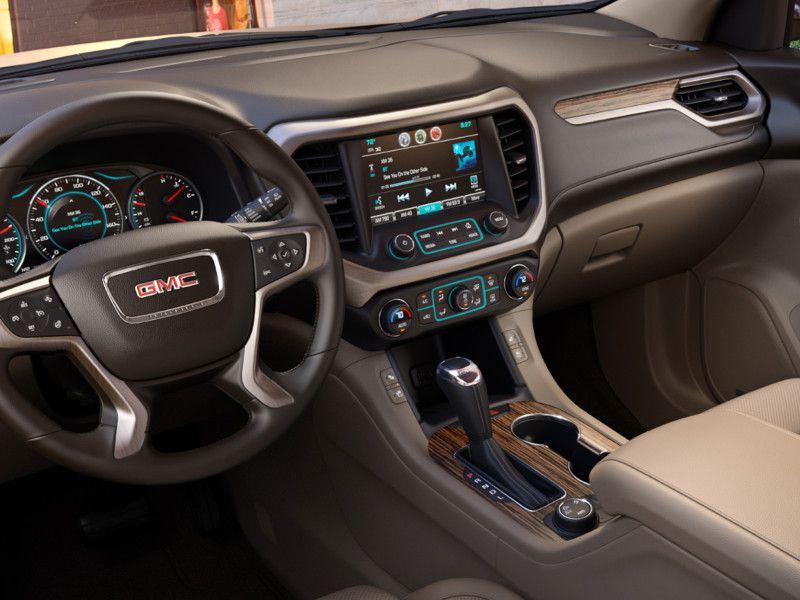
Photo by GMC
Infotainment
The 2018 GMC Acadia is sure to be a hit with the family. It features ample USB charging ports, built-in Wi-Fi, 4G LTE connectivity, and OnStar. Apple CarPlay and Android Auto capability are standard in all trim levels. The SL and SLE are fitted with a 7-inch touchscreen, while the SLT and Denali feature an 8-inch touchscreen along with an eight-speaker Bose audio system.
While the 2018 Toyota Highlander includes Siri Eyes Free, it lacks Apple CarPlay and Android Auto support and built-in Wi-Fi. Most models include an 8-inch touchscreen, while the base LE trim which gets by with a 6.1-inch unit. The top-of-the-line Highlander Limited and Limited Platinum models feature a 12-speaker Entune Premium JBL audio system.
GMC Acadia
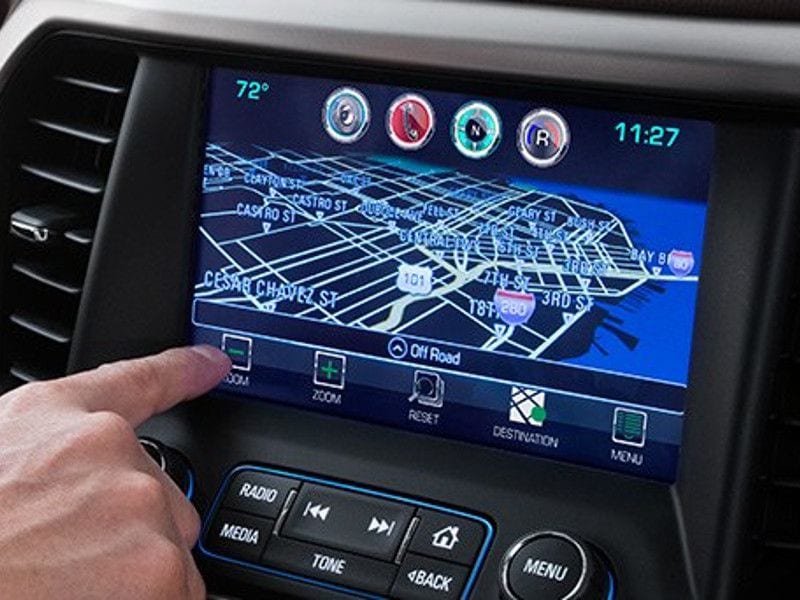
Photo by GMC
Safety
There’s a clear winner in the safety category. The Acadia offers lane-keeping assistance, blind-spot monitoring, low-speed forward automatic braking, and adaptive cruise control — but only as options in the upper trim levels. By comparison, all 2018 Highlander models include adaptive cruise control, a lane-departure warning with steering assist, automatic high beams, and a pre-collision system with pedestrian detection as standard equipment.
The National Highway Transportation Safety Administration 2018 Highlander models an overall five-star rating, with four stars for the frontal crash and rollover tests. The all-wheel drive 2018 Acadia achieves a five-star NHTSA rating, while the front-wheel drive model slips to four stars. Both have four-star rollover ratings. The Insurance Institute for Highway Safety rates the Highlander a Top Safety Pick. Although the Acadia comes close to achieving the IIHS rating, it falls short on headlights and car seat latches.
Toyota Highlander
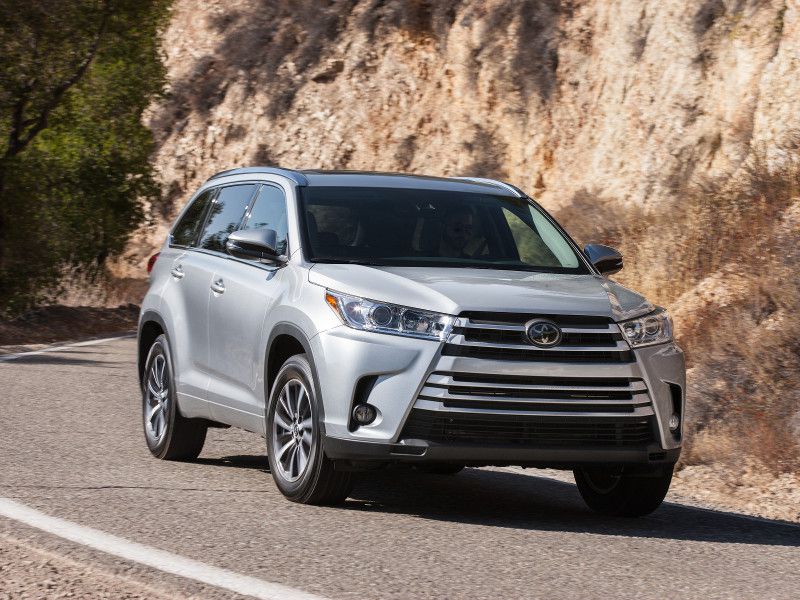
Photo by Toyota
Drivetrain
The Acadia and Highlander are both available with four- and six-cylinder engines. The Acadia’s base engine is a 2.5-liter direct-injected four-cylinder that produces 193 horsepower and 188 pound-feet of torque. We’d opt for the 3.6-liter V6, which produces 310 hp and 271 pound-feet of torque.
The 2018 Highlander’s 2.7-liter four is mated to a six-speed automatic and is only available in the LE base model. It produces 185 hp and 184 pound-feet of torque. The 3.5-liter V6 delivers 295 hp and 263 pound-feet of torque. It's matched up with an eight-speed automatic If you travel off the beaten path, you’ll want to invest in the Acadia’s All Terrain option, which employs an Active Twin Clutch all-wheel drive system to deliver enhanced traction over loose road surfaces. Overall, the Acadia has the advantage in this category with a bit more power and an advanced AWD system for folks who venture off the pavement.
GMC Acadia

Photo by General Motors
Fuel Efficiency
This category has a clear winner. The EPA rates the four-cylinder 2018 GMC Acadia at 21 mpg in the city and 26 mpg on the highway with front-wheel drive, and it loses 1 highway mpg with all-wheel drive. The V6 Acadia is rated at 18 mpg city / 25 highway with FWD or AWD.
The 3.5-liter V6 2018 Toyota Highlander is EPA-rated at 21 mpg city / 27 highway with FWD. The 2.7-liter four-cylinder base model is rated lower, at 20 city / 26 highway. The AWD 3.5-liter LE is-EPA rated at 20 city / 27 highway. Meanwhile, the AWD Highlander Hybrid combines the V6 with electric propulsion to achieve 30 mpg city / 28 mpg highway.
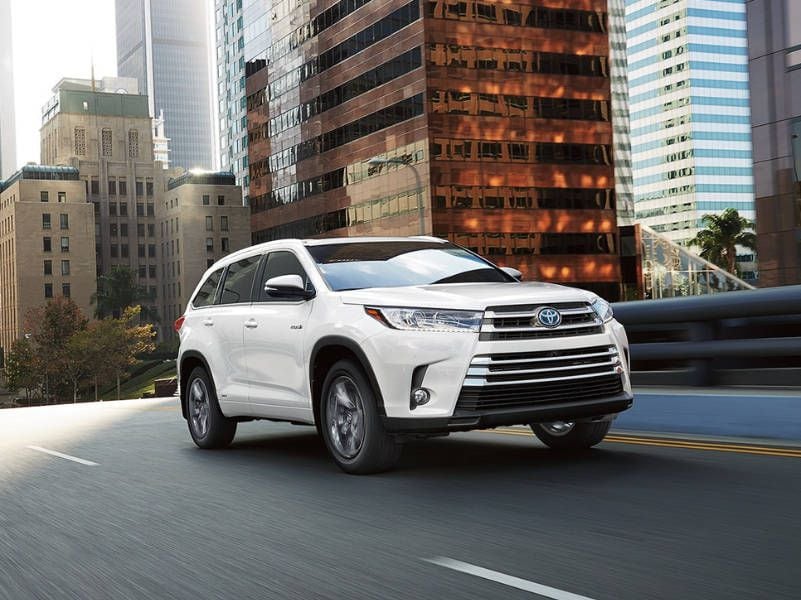
Photo by Toyota
Ride and Handling
The 2018 GMC Acadia and Toyota Highlander are quiet cruisers. Both provide an acceptable ride and adequate handling. While neither vehicle is a standout in this category, the range-topping Acadia Denali offers an adaptive suspension system, which allows the driver to soften up the ride or tighten up the handling. Our winner is the Acadia, as long as you opt for the Denali.
GMC Acadia
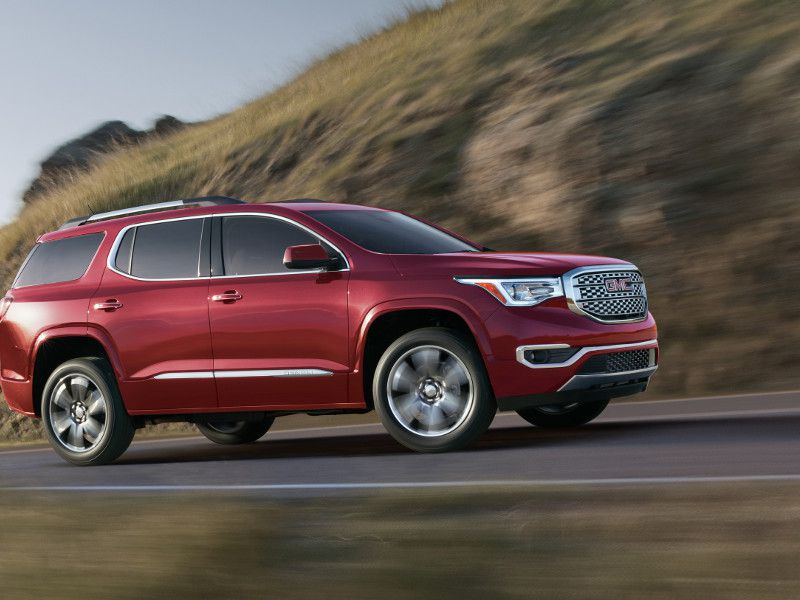
Photo by GMC
Warranty
The 2018 GMC Acadia and Toyota Highlander’s warranty programs match up closely. The Acadia has a five-year/60,000-mile powertrain warranty, a three-year/36,000-mile bumper-to-bumper warranty, three-year/36,000-mile corrosion protection, six-year/100,000-mile rust-through protection, and five-year/60,000-mile courtesy transportation.
The 2018 Highlander includes a five-year/60,000-mile powertrain warranty, a three-year/36,000-mile comprehensive warranty, five-year/unlimited-mile corrosion perforation, and a two-year/25,000-mile complimentary maintenance plan with 24/7 roadside assistance. Providing free maintenance gives the Highlander the edge.
Toyota Highlander
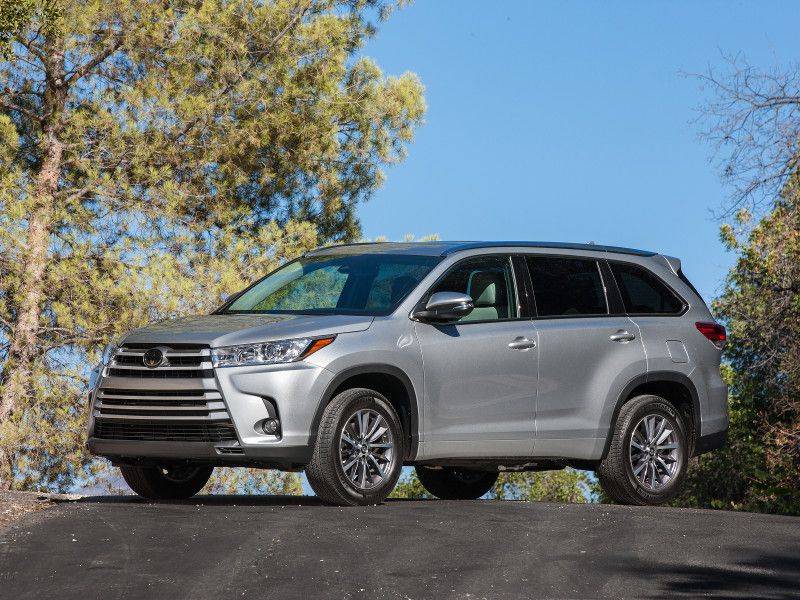
Photo by Toyota
Value
While the Acadia has more street presence than the Highlander, a stronger infotainment system, and optional All-Terrain off-road technology, the Highlander’s standard safety features, proven reliability, and complimentary maintenance plan provide peace of mind. Furthermore, when gas prices rise, the Highlander Hybrid’s superior fuel efficiency make it a compelling choice.
Toyota Highlander

Photo by Toyota